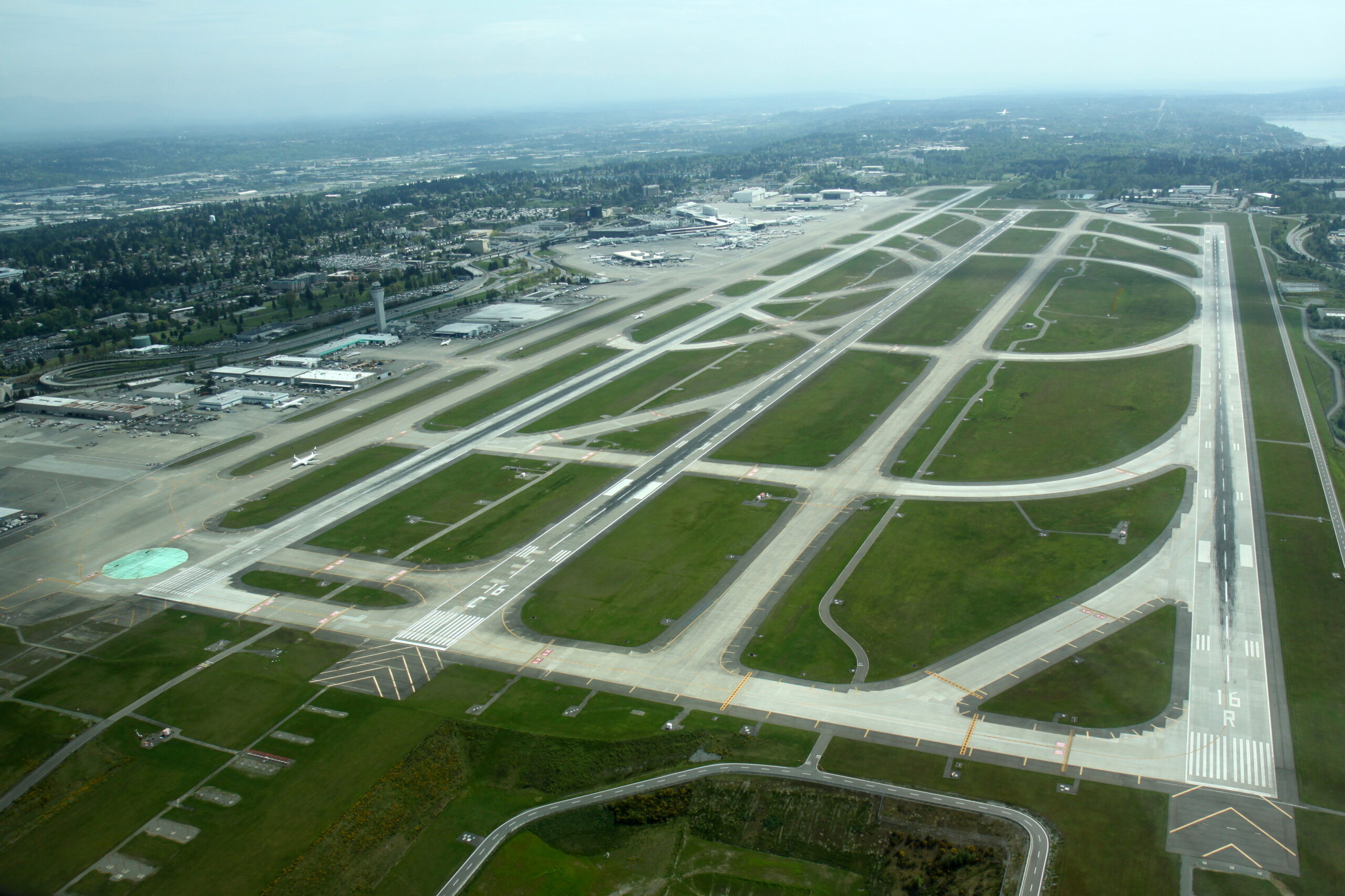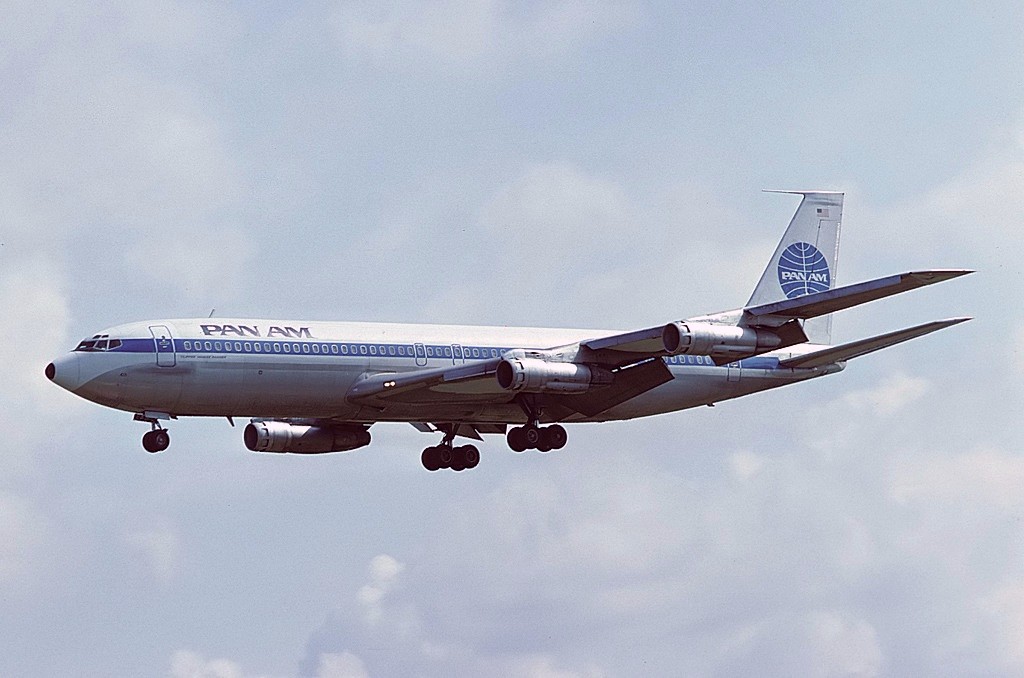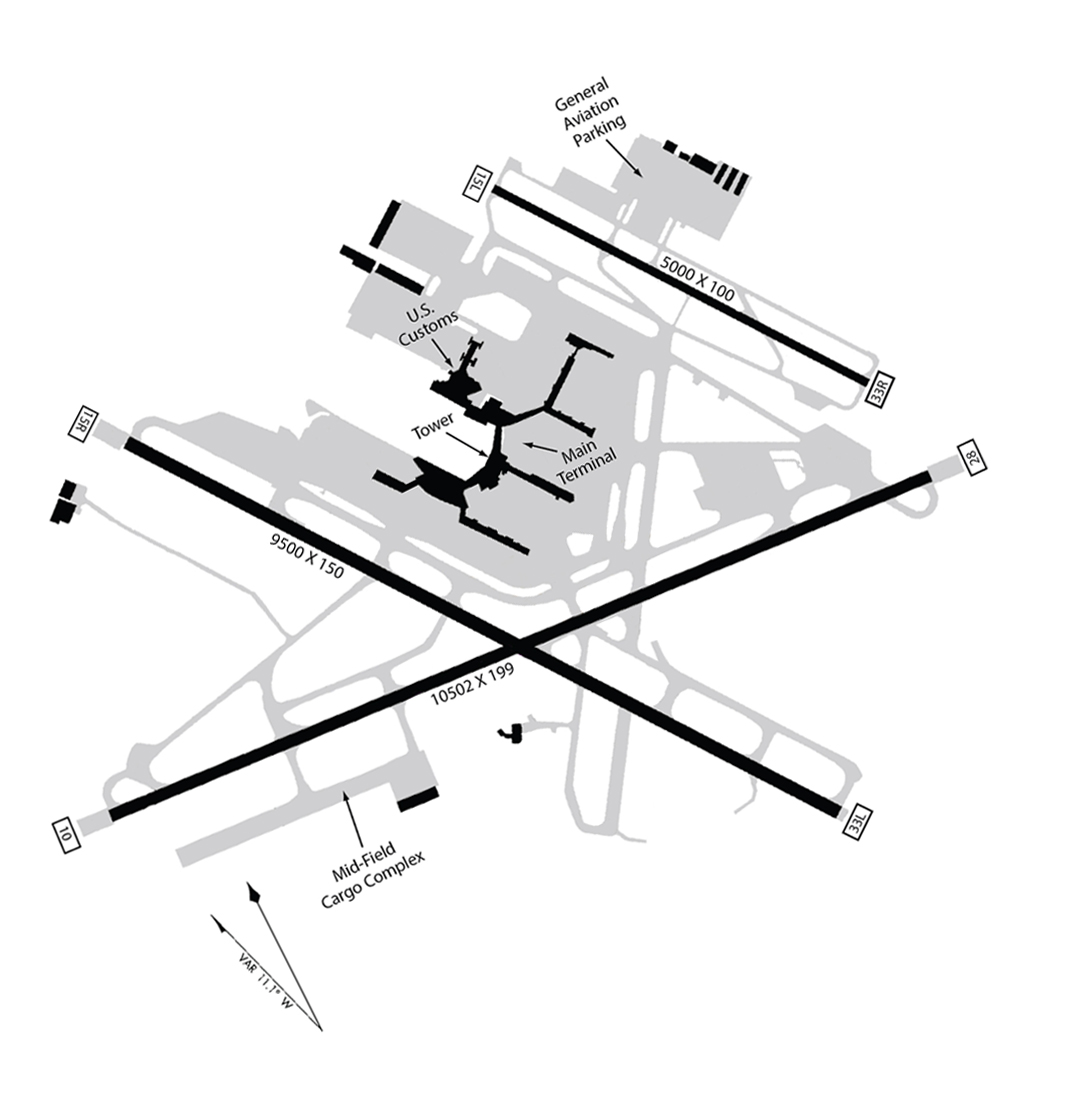We love this image because it makes clear the confusing nomenclature of runways.
Intro
Sea-Tac is a category IIIb certified airfield, allowing operations in all but the worst conditions. There are three runways:
- Runway #1 16L/34R – 11,901 feet
- Runway #2 16C/34C – 9,426 feet
- Runway #3 16R/34L – 8,500 feet
The southern ends of the runways are labelled ’34’ Right, Center, Left (from east to west). So a plane landing on 34L is coming in from the south and landing on Runway #3.
The northern ends of the runways are labelled ’16’ Left, Center, Right (from east to west). So a plane landing on 16R is coming in from the north and landing on Runway #1.
Easy, right?
Elevation and Distance
Note the elevations and length of each runway. And also take note of the distance between each runway (see how the space between Runway #1 and Runway #2 is so much wider than the space between Runway #2 and Runway #3?) These are all very significant for determining the types of take offs and landings that are most suitable (more on this soon).
Going With The Flow
When people in the know are talking about flights they will mention the term ‘Flow’. This simply means the direction in which planes are arriving and departing.
All flight operations, both take offs and landings, move in one direction at any given time. When Sea-Tac entered the jet age, its runways were aligned north and south according to the prevailing wind patterns of our area. So that means that operations occur in either North Flow or South Flow.
- North Flow means the planes are arriving at the south end runways (34R, 34C, 34L) and taking off from the north end heading northward.
- South Flow means the planes are arriving at the north end runways (16R, 16C, 16L) and taking off from the south end (34R, 34C, 34L) heading south.
Trivia: ’34’ and ’16’ refer to points on the compass. So ’34’ refers to 340 degrees, ie. close to ‘north’. And ’16’ means 160 degrees, ie. almost south. So if a flight is indicated as ’34L’, that means it is arriving on the left runway. Or to put it another way: the airport is in north flow and the flight is arriving on the Third Runway.
Here are some examples of flight tracks in both North Flow and South Flow and a deeper dive into what it means for the region.
- Red is for arrivals.
- Green is for departures.
Why bother?
In general planes will take off by flying into the prevailing wind direction. If the wind is coming from the north, the airport will use North Flow. And if the wind is coming from the south, the airport will use South Flow.
When the prevailing winds change, the airport will go through a process where they switch Flow. This doesn’t happen all that often because despite the reputation of Puget Sound, prevailing winds are fairly consistent with the seasons. In fact, South Flow is used about two thirds of the year–almost always during the colder/cloudier months.
Changing Flow seems to be occurring less and less as traffic increases, partly because modern jet engines are so powerful that the wind direction no longer has as much of an impact on safety. That said, favorable wind direction requires less power, which saves fuel and also means less community noise.
And sometimes the Flow of the airport is chosen based on scheduling requirements. Sometimes the cost and hassle of switching Flow doesn’t pencil out for an airport as busy as KSEA.
Brief History
If we were starting over, we might re-title the entire project, “Sea-Tac Airport in the Jet Age.” Because the real history of the airport begins with the arrival of commercial jets. We only spend time on ‘the good old days’ where it is relevant to later events in the community.
- 1956 First jet-capable runway
- 1958 First runway extended
- 1961 First Runway extended again to its final length with ‘cap’ over 188th St.
- 1970 Second Runway
- 2008 Third Runway opens
Pre-History: 1944-1956
Here is the original ‘X-rated’ version of the airport. The main purpose here is to give the reader some context of the Surrounding communities. One tiny note: given the configuration, even then one had to question the whole notion that “airplanes must take off into the wind.” Yes, but do they, really? 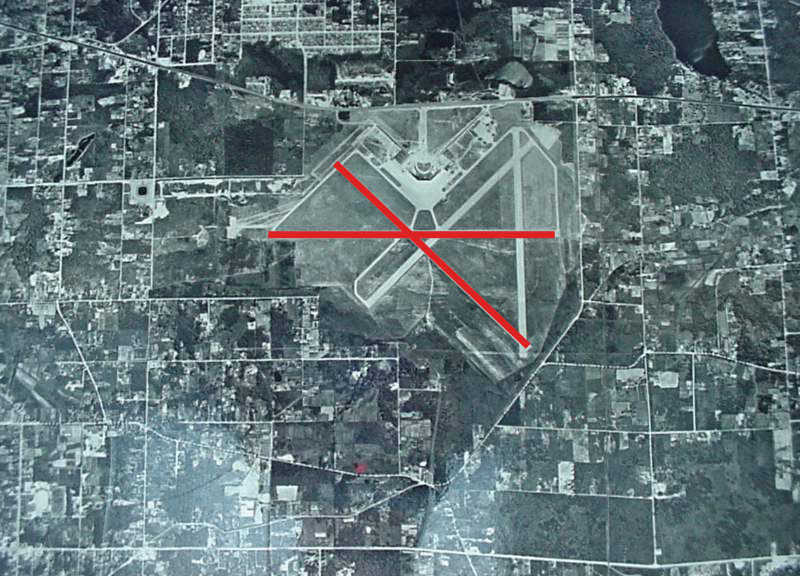
Sea-Tac Airport in the Jet Age
As we said, the real history of the airport begins with the arrival of this bad boy, the Boeing 707 first flown by Pan Am Airlines.
Jet engines enabled the industrial scale growth of aviation. Jet engines can carry more people, more cargo and fly much faster. But what matters most for this discussion is the fact that they require much longer runways.
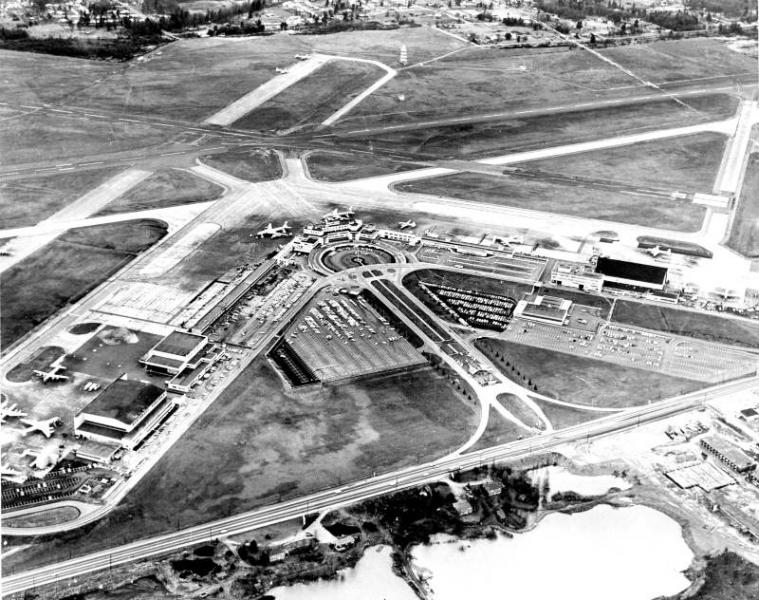
This is 1961, the final extension of what is now the ‘First Runway’, extended for the third time to its final length with ‘cap’ over 188th St. We like it because you can see the ‘vestigial organs’ of the original runways, which were still heavily used for general aviation. Note all the empty land in front of Pacific Highway, now covered by the circular parking garages.
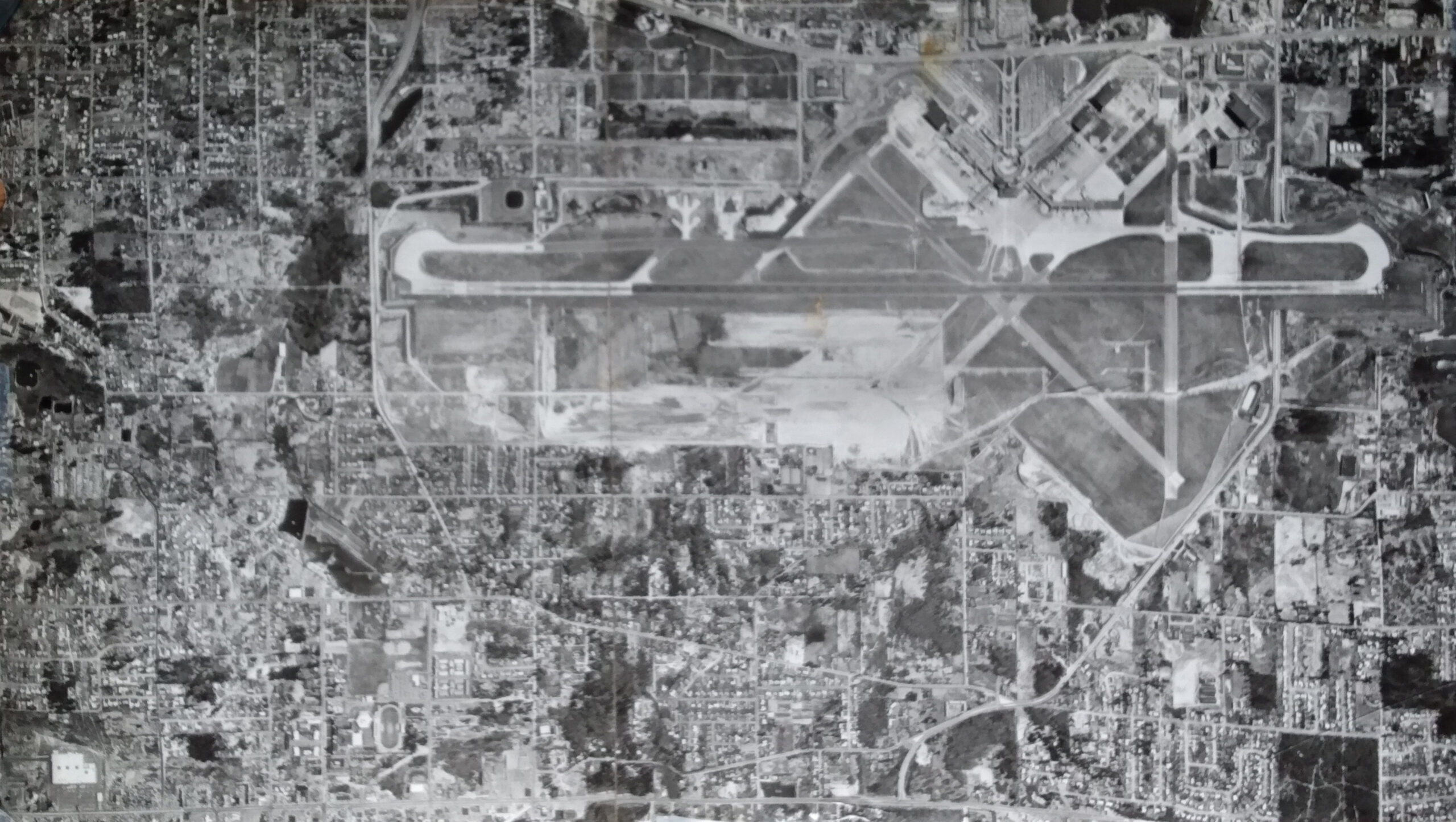
And here is the second runway under construction, showing clearly that ‘cap’ over 188th.
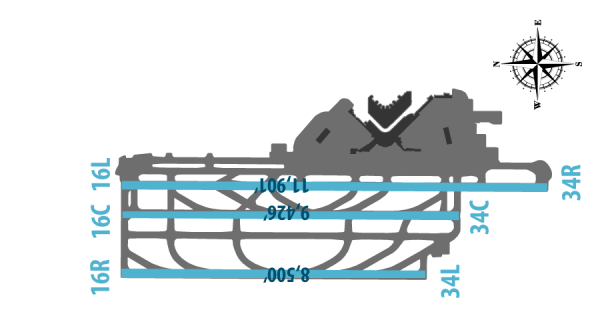
Four notable features of the current configuration
- The Third Runway is much shorter than the first two. Less runway means you have to power up on take-off and you have to be much slower on landing. Both create more noise. Again, note that the eastern runway was extended three times to address both those challenges. Now? You just use more power (and more noise.)
- It is also much farther side-to-side from the center runway than the Eastern Runway. The added distance (separation) makes it much easier (safer) to run parallel (simultaneous) landings and take-offs.
- Note all the gray roads? That is a network of taxiways. They became far more elaborate with the Third Runway. In fact, when we say ‘Third Runway Project’ it would be almost as accurate to say “Taxiway Redesign–with Third Runway” because those taxiways are almost as important to throughput as the runways themselves. The runways are the freeways, and the taxi-ways are the on and off ramps. No matter how many lanes a freeway may have, consider how backed up it can get if the exits become clogged.
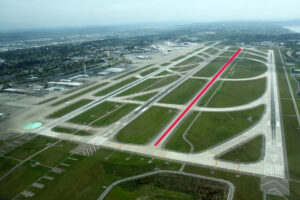 Finally, note the north/south taxiway running the entire length of the airfield. It’s just west of the center runway. That’s called Tango. And there is a pretty good chance that when you first opened this article and, you mistook Tango Taxiway for a runway. It’s not a runway. But don’t feel bad about it. So have a number of pilots over the years.
Finally, note the north/south taxiway running the entire length of the airfield. It’s just west of the center runway. That’s called Tango. And there is a pretty good chance that when you first opened this article and, you mistook Tango Taxiway for a runway. It’s not a runway. But don’t feel bad about it. So have a number of pilots over the years. As has been discussed to death, one reason given for building the Third Runway had to do with the notion that the Second (center) runway was considered too close (800ft.) from the First Runway. That limitation has largely been overcome through electronic navigation. However, there is nothing to prevent the Port of Seattle from swapping that taxiway and the 16C to make the configuration what it probably should have been all along. When the Port opened the Third Runway, it immediately began a re-surfacing project for the First and then the Second Runways. Having that new Third Runway, gave them the ability to do that. We only mention it to point out that there are all kinds of ways to enhance throughput using just what is already on the airfield.
